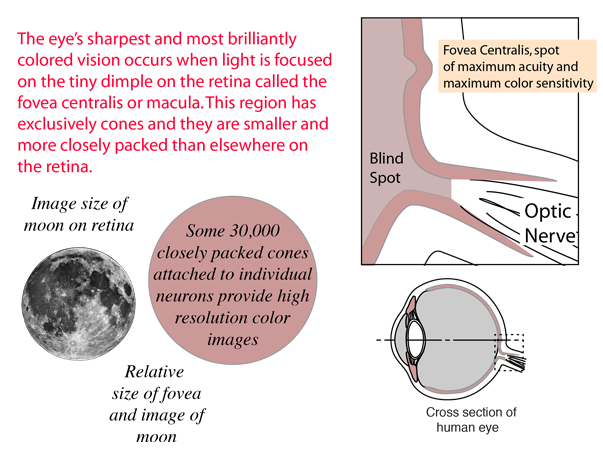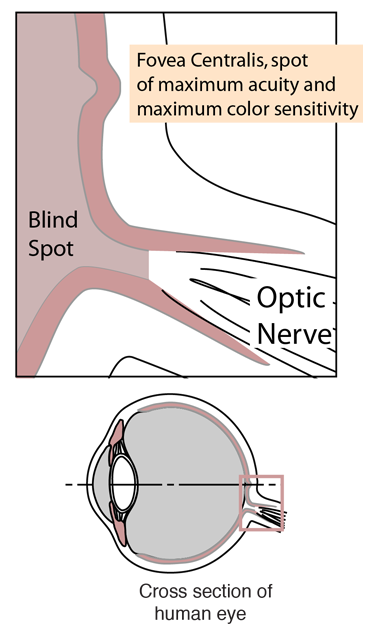The Retina
The retina is a light-sensitive layer at the back of the eye that covers about 65 percent of its interior surface. Photosensitive cells called rods and cones in the retina convert incident light energy into signals that are carried to the brain by the optic nerve. In the middle of the retina is a small dimple called the fovea or fovea centralis. It is the center of the eye's sharpest vision and the location of most color perception.

"A thin layer (about 0.5 to 0.1mm thick) of light receptor cells covers the inner surface of the choroid. The focused beam of light is absorbed via electrochemical reaction in this pinkish multilayered structure. The human eye contains two kinds of photoreceptor cells; rods and cones. Roughly 125 million of them are intermingled nonuniformly over the retina."(Hecht) The ensemble of rods(each about 0.002 mm in diameter) forms an exceedingly sensitive detector, performing in light too dim for the cones to respond to. It is unable to distinquish color, and the images it relays are not well defined.
"In contrast, the ensemble of 6 or 7 million cones (each about 0.006 mm in diameter) can be imagined as a separate, but overlapping, low-speed color film. It performs in bright light, giving detailed colored views, but is fairly insensitive at low light levels."(Hecht)"
The rods and cones appear to be pointed away from the light source they detect. The light strikes the sensitive pigment layer at the back of the eye and transfers the information to the nearby rods and cones. The rods and cones absorb the scattered light from the nearby pigment layer, which makes vision clearer and keeps the sensitive detectors in a more protected location. The rods and cones are also kept closer to their metabolic energy supply. From the rods and cones, the signals pass through horizontal cells, bipolar cells, amacrine cells and retinal ganglion cells on their way to the retinal highway leading to the optic nerve. (Mammoth)
Vision concepts
Image formation concepts
Reference
Hecht, 2nd Ed.
Sec. 5.7
Mammoth Memory site
| HyperPhysics***** Light and Vision | R Nave |

